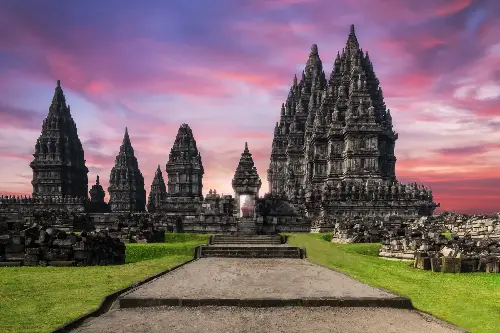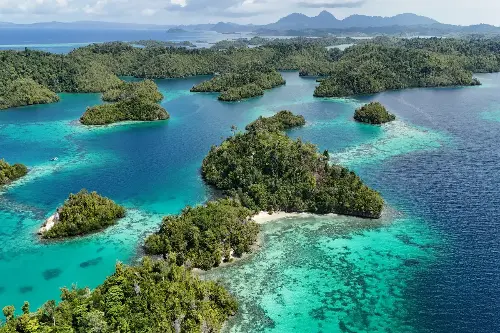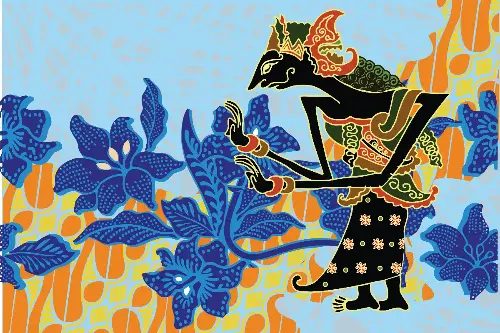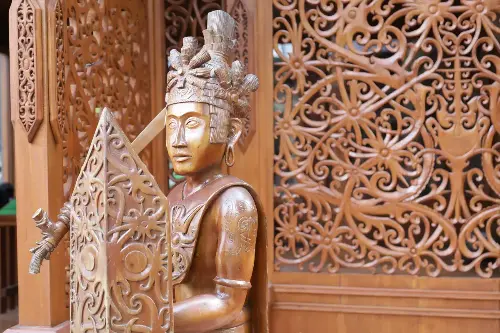Stretching like an emerald necklace across the equator, Indonesia is a tapestry of over 17,000 islands, each holding a treasure trove of unique stories, ancient heritage, and resplendent arts. From lush rainforests of Sumatra to remote archipelagos in eastern Papua, every island adds a thread to the vibrant mosaic of Indonesian culture. To journey across Indonesia is to roam through centuries of human history, myriad traditions, and endless artistic expression, all deeply felt in daily life and ceremonies alike. With its roots in centuries-old interactions between indigenous cultures and global civilisations, Indonesia’s heritage is sheer magic for the curious soul.
Indonesia’s greatest wonder is its diversity. Home to more than 1,300 ethnic groups and over 700 living languages, the nation is a veritable living museum of civilisations. Java, the beating heart of Indonesia, gathers grand old kingdoms, centuries-old mosques, and the pulsing creativity of modern artists in cities like Yogyakarta. Bali, an island synonymous with art, reveals a world of frangipani-scented ceremonies and graceful temple architecture, while the Maluku Islands, once called the Spice Islands, whisper tales of ancient trade, colonisation, and resilience.
Every island is distinctly Indonesian, yet possesses its own language, traditions, and worldview. On Sulawesi, the Torajan people perform extraordinary funeral rituals that draw visitors from around the globe. In Papua, tribal communities still practise woodcarving and intricate weaving, keeping ancestral stories alive in every fibre and form. This rich patchwork has sculpted Indonesia into one of the most culturally diverse nations, where patience and curiosity are rewarded by endless new discoveries.
The arts of Indonesia reflect not just beauty, but also philosophy. Take batik, for example—the intricate fabric art adorned with patterned wax-resist dyes. Recognised by UNESCO as an Intangible Cultural Heritage, batik is more than cloth: it’s a living language of symbols, often depicting stories of creation, nature, and spiritual wisdom. Each region expresses batik differently. From the earthy, geometric motifs of Java to the flamboyant, ocean-inspired designs of the north coast, the identity of each locale finds voice in colour and form.
The world of performance also thrives, with wayang kulit (shadow puppetry) reigning as one of Indonesia’s best-known art forms. Steeped in Hindu epics and local legends, wayang is both entertainment and spiritual ritual. Puppeteers, known as dalang, use flickering oil lamps and carefully cut leather puppets to bring to life the great battles of Ramayana and Mahabharata, channelling profound moral lessons along with captivating stories. Gamelan orchestras, with their shimmering bronze percussion, echo through temples and palaces, creating a soundscape that is both hypnotic and deeply moving.
On the stage, modern Indonesian theatre and dance experiment with traditional roots, as seen in the contemporary works of choreographers who blend Balinese, Javanese, and Papuan influences with international trends. Art flows through the veins of Indonesia, adapting, reinventing, and enduring.
Sacred Spaces And Living Heritage

Architecture in Indonesia is a story of faith, community, and enduring craftsmanship. Ancient stone temples like Borobudur and Prambanan stand as colossal reminders of Indonesia’s Buddhist and Hindu past, their bas-reliefs narrating cosmic myths to generations of visitors. In Bali, temples known as pura are seamlessly intertwined with the landscape—open to the sky, set among rice fields, and attended by daily offerings of flowers and incense. Each village has its own pura, fostering a sense of shared faith and identity.
On Nias and Sumba, old megalithic sites stand alongside thatched clan houses, testaments to ancient ancestor worship and social hierarchy. In cities, Dutch colonial mansions mix with syncretic Chinese temples and soaring Islamic minarets. Religious festivals, from Eid celebrations in Aceh to the silent meditation of Balinese Nyepi, transform familiar spaces into stages for spectacle and reflection.
Cultural heritage isn’t only in grand monuments. Across Indonesia, it is woven into daily life: in the delicate preparation of rendang in Padang, the communal rice planting ceremonies of West Java, and the joyful competitions of traditional boat races in Ternate. It lives in lullabies passed from grandmother to child, in folklore recited beside the evening fire, and in crafts patiently handed from master to apprentice.
In bustling cities like Jakarta and Surabaya, Indonesia’s creative spirit pulses with new energy. Young designers and artists draw inspiration from ancient motifs, reimagining them in contemporary fashion, digital artworks, and avant-garde installations. Batik-patterned streetwear, coffee shops decked with Dayak carvings, and indie music inspired by folk melodies are all testaments to how tradition is not a relic, but a launching pad for innovation.
Communities across the archipelago are reviving endangered handicrafts, adapting them for today’s market while respecting their roots. Social media champions local artisans, turning once-obscure crafts into global phenomena. Annual festivals, such as the Bali Arts Festival or Papua’s Lake Sentani Festival, draw throngs of locals and tourists alike to celebrate, learn, and share in the enduring miracle of cultural exchange.
Travelling Indonesia, one can see how the old and new dance together. Ancient legends are retold in comic books, sacred dances are reinterpreted in urban clubs, and centuries-old cuisines inspire gourmet chefs. It’s a living demonstration that heritage is not just preserved—it is alive, inviting everyone to join in the creative journey.
Like its endless coastline, Indonesia’s story stretches on, inviting explorers, dreamers, and culture lovers to listen, participate, and add their own chapter to this magical, everlasting epic. Each island, with its own tapestry of tradition, gently reminds us: every story matters, every song enriches, and every encounter with Indonesian culture is a true adventure.



